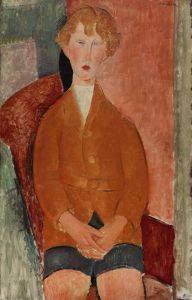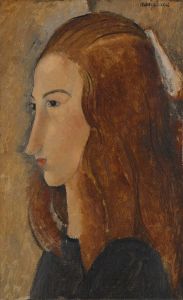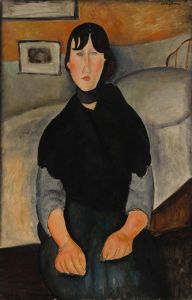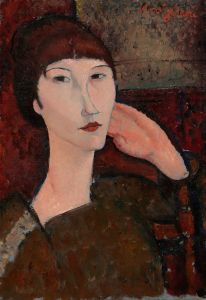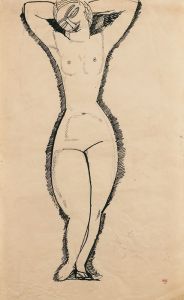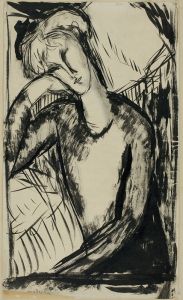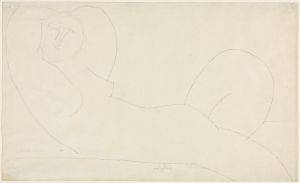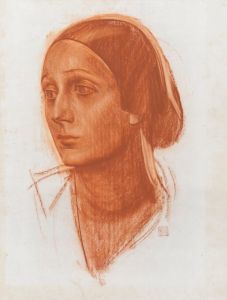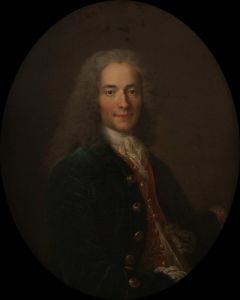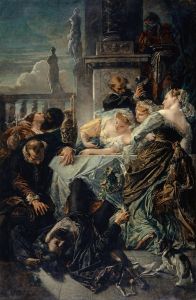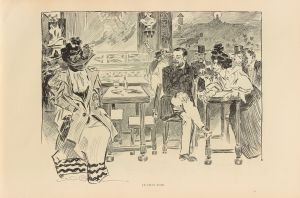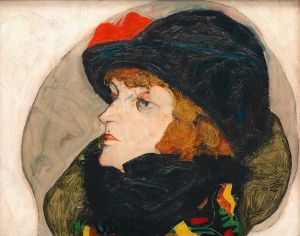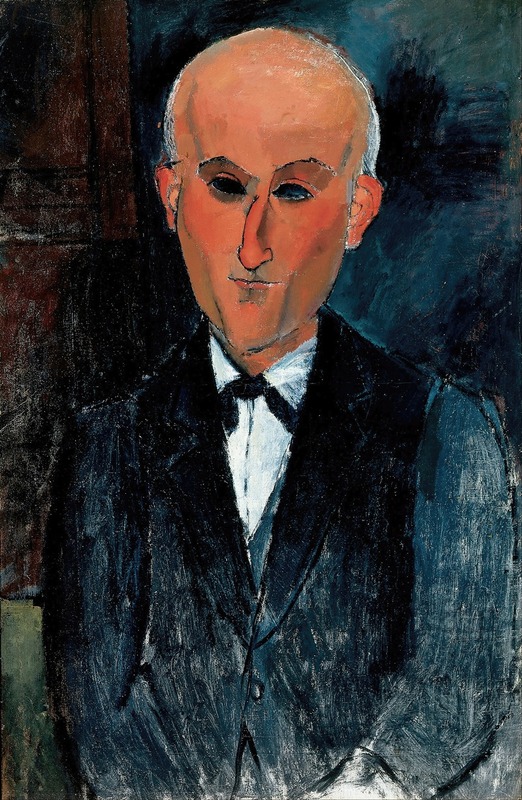
Max Jacob
A hand-painted replica of Amedeo Modigliani’s masterpiece Max Jacob, meticulously crafted by professional artists to capture the true essence of the original. Each piece is created with museum-quality canvas and rare mineral pigments, carefully painted by experienced artists with delicate brushstrokes and rich, layered colors to perfectly recreate the texture of the original artwork. Unlike machine-printed reproductions, this hand-painted version brings the painting to life, infused with the artist’s emotions and skill in every stroke. Whether for personal collection or home decoration, it instantly elevates the artistic atmosphere of any space.
Amedeo Modigliani, an Italian painter and sculptor, is renowned for his distinctive style characterized by elongated forms and mask-like faces. Among his notable works is the portrait "Max Jacob," which exemplifies his unique approach to portraiture. Painted in 1916, this artwork captures the likeness of Max Jacob, a French poet, painter, writer, and critic who was a prominent figure in the Parisian avant-garde scene during the early 20th century.
Max Jacob was born on July 12, 1876, in Quimper, Brittany, France. He moved to Paris in 1894, where he became an integral part of the bohemian community in Montmartre. Jacob was a close friend of many influential artists and writers of the time, including Pablo Picasso, Guillaume Apollinaire, and Modigliani himself. His interactions with these figures significantly influenced his work and contributed to the vibrant cultural milieu of the period.
Modigliani's portrait of Max Jacob is a testament to their friendship and mutual respect. The painting is executed in oil on canvas, a medium Modigliani frequently employed. In this portrait, Modigliani captures Jacob with his characteristic elongated neck and simplified facial features, which are hallmarks of Modigliani's style. The sitter's eyes are depicted as almond-shaped and slightly asymmetrical, a common trait in Modigliani's portraits that adds a sense of introspection and depth to the subject.
The background of the painting is relatively plain, which serves to emphasize the figure of Jacob. This compositional choice is typical of Modigliani's portraits, where the focus is primarily on the subject rather than the surroundings. The color palette is subdued, with earthy tones that lend a sense of warmth and intimacy to the portrait.
Modigliani's portrayal of Max Jacob is not merely a representation of physical appearance but also an exploration of the subject's inner character. The elongated forms and stylized features suggest a deeper psychological insight, a quality that Modigliani sought to convey in his portraits. This approach aligns with the broader trends of Expressionism, where artists aimed to depict emotional experiences rather than realistic depictions.
The portrait of Max Jacob is part of Modigliani's broader body of work that includes numerous portraits of friends, lovers, and acquaintances from the Parisian art scene. These works collectively highlight Modigliani's ability to capture the essence of his subjects through his distinctive artistic language. Despite facing challenges in his lifetime, including financial difficulties and health issues, Modigliani's work has gained significant recognition posthumously, and he is now celebrated as one of the key figures in early 20th-century art.
Today, Modigliani's "Max Jacob" is appreciated not only for its aesthetic qualities but also for its historical significance, offering insight into the interconnected world of artists and intellectuals in early 20th-century Paris. The painting stands as a testament to the enduring legacy of both Modigliani and Max Jacob, reflecting the vibrant cultural exchanges that defined their era.





